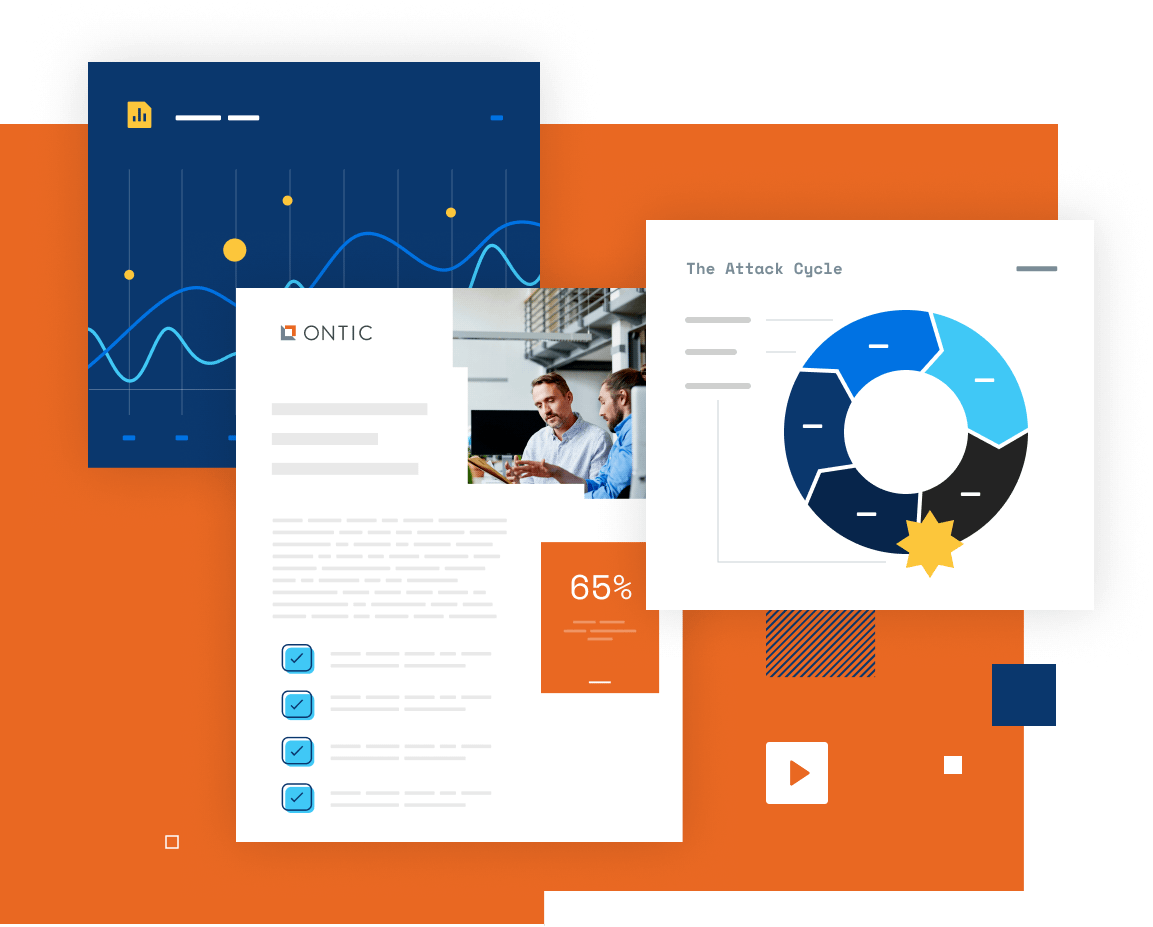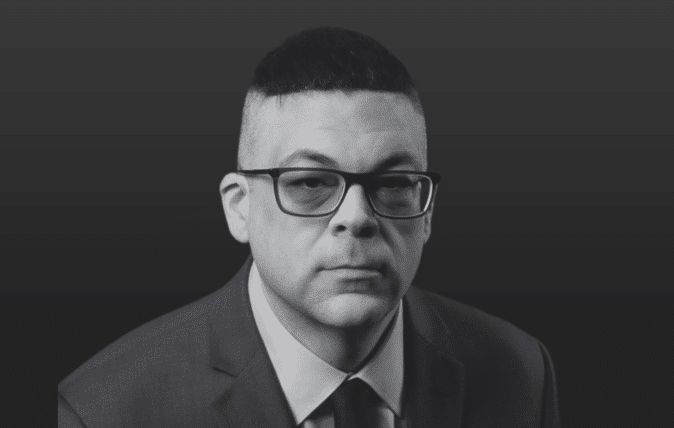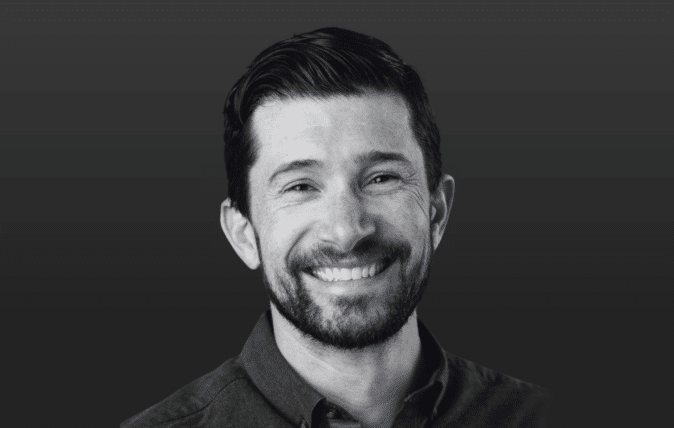October 16, 2024
Connected Intelligence and the Future of Security: Manish Mehta’s Perspective
Connect with us wherever you get your podcasts
In this episode
In this episode, Manish Mehta, Ontic’s Chief Product Officer, sits down with hosts Chuck Randolph and Fred Burton to discuss the evolution of security and the importance of Connected Intelligence in modern protective practices. Manish also shares his insights on technological disruptions and how they shape industries beyond just security. The conversation touches on the challenges of organizational silos and the potential for GSOCs (Global Security Operations Centers) to become central to modernization.
Sign up for our monthly newsletter.
0:26
Chuck:
Manish Mehta has driven disruptive innovations in the software industry for over 34 years, where he was a pioneer in the development of big data and large enterprise platforms at scale. He spent over 18 years at Dell, where he was a founding member and global VP of Dell.com. Manish has also worked in the nuclear industry at Three Mile Island, and has been the chief product officer at three B2B software startups, which has all led to his current position here as Ontic’s Chief Product Officer. Well, Manish, welcome, my friend.
Manish:
Chuck, great to be here. Fred, always a pleasure.
Chuck:
Great to see you. I mean, I’m getting outnumbered by the Dell alumni.
Manish:
Almost two decades, Chuck, almost two decades.
Chuck:
Absolutely. This is great. I mean, you know, we’re here, we’re at an evolution point, a maturation point, if you will. So I think it’s a perfect time, Manish, to get you to kind of step out from behind the green door and take a seat here and add your voice to what we’re doing.
Manish:
Well, I’m honored to be part of the team, and obviously both of your reputations precede anything I could ever accomplish in my career. So I’m just honored to be part of the team.
1:45
Chuck:
Well, you know, Fred and I were talking before we turned on the mic. I mean, it’s fascinating. Interesting. You think about the evolution of security itself. I mean, Fred, you’ve many times have talked about the analog you know, to the to the first, you know, idea of protective intelligence. Now, as we start thinking about taking that one step further, to connected intelligence, I mean, I’d be curious from both of your observations, you know, Manish, you spent a lot of time in critical infrastructure. And Fred, as you’ve said before, you started in that binary age, I did as well, but it was right at the very end of that. I mean, what would you say, you know, Fred, let’s start with you. I mean, what would you say, like the the first maybe one or two things that come to mind that were important in the evolution of security and your observations, of course.
Fred:
That’s a great question, Chuck. When you start thinking of this conceptually from a historical perspective, everything shifted after the Kennedy assassination to the focus of protective intelligence, to better intelligence being coordinated amongst agencies and so forth. And then, as I did a keynote a few years back for the State Department on how the evolution of our industry really, you could break it down in 10-year cycles. You know, the creation of international security managers, corporate security managers. executive protection teams. And they were always driven by external kind of variables. For example, the Kennedy assassination, the killing or hostage taking of American business people overseas and so forth. What is fascinating to me, as you look even at the evolution of the Ontic Platform, is how fast technology now is evolving. You know, I can remember when I started in 1981 in the business, how We were lucky to have a spreadsheet or a screen depicting exactly where our protectees were on any given time and their code name. And we had some capabilities to track motorcades, for example. But the evolution of this space is one that the speed to me is something that I don’t think anybody could have anticipated even 10 years ago or five years ago.
Chuck:
That’s interesting. Manish, I’m thinking about what is it, Moore’s law? And I know there’s laws before it, but I think that’s one that most people that listen into this would probably think about it. And Fred, your idea of the 10 year cycle, I think that’s spot on. I mean, but Manish, what are we missing from this? I mean, you started in critical infrastructure. You, you know, you’ve been a VP at Dell, you’ve watched the the maturing of the Ontic Platform. You’ve talked about the grid you’ve talked about. So what are we missing from maybe that futurist point of view in, in a look back?
Manish:
Well, if you look, uh, and, and just to build on what Fred was talking about in this notion of Moore’s law, there’s more data than there’s ever been before. Threat landscape continues to expand at a rapid rate. And the end state ideal of protecting, which is really where this podcast also originated, you must step back and recognize, or at least we’re starting to recognize, that there are more teams, more functions, more disciplines, more departments, more tools, and more threat vectors that are involved in the protection of people and assets. And I think it’s that evolution where connected intelligence, the ability to connect systems and build that common infrastructure, to your point, Chuck, that you have to have a foundation and you have to have a core infrastructure that can connect those signals together across all those teams and across all those organizations.
Chuck:
That’s interesting. I mean, if we think about it, put it, you know, I was that close to having a, an additional degree in classic culture, but I think about Pandora’s box and if, technology, let’s say circa 1999 with the advent of the modem and then chat rooms and, you know, Prodigy, CompuServe, all the things. And then we had this Pandora’s box that opened. And now I think with that, we’re almost forced, or we’ve had an inflection point to where now connected, a connected platform. I mean, if you don’t have it. you’re likely to fail. I mean, we hear organizations talk about like, hey, Manish, Fred, we don’t have any problem here because we’re simply maybe not seeing the threat. And I think I’ve heard you many times before, Manish, talk about this idea of the grid and how trees and other organisms are connected underneath the surface that brings up insights. Am I incorrect about that idea? What are your thoughts?
Manish:
No, you’re spot on. And I’ll give you a metaphor I used many, many years ago related to near earth objects. So if you think of asteroids in the sky, it was fascinating. A hundred years ago, scientists and astronomers were convinced there were only a dozen, maybe two dozen near earth objects in the sky that could obliterate a city or destroy our planet. Right. And it wasn’t until the advancement of high-powered telescopes and the ability to look deeper into space where they recognized there were so many more threats and near-Earth objects in the ranges of 20,000 to 30,000 plus, and many of those could obliterate our planet. And they had no mechanism to identify these objects or to track them. And obviously, technology has evolved and science has evolved. And I think of our space as something similar. If you only look with the naked eye, you’ll probably see a limited number of threats. But if you use the right technology and use the right telescoping capabilities, you’ll start to see a lot more. And then if you could, my goodness, connect them together across functions and organizations, maybe you can keep people safe.
08:05
Chuck:
Fred, what’s the danger of bias as we as we look forward, you know, future thinking, think people process technology. And now, you know, you can throw AI, we’re at the cusp of maybe talking about quantum and things like that. I mean, what’s the, I don’t want to say like, a dangerous tale, but I mean, what’s the conversation around bias to the human in the loop here?
Fred:
Yeah, that’s a good question, Chuck. When you start looking at bias, I’ll give you a perfect case study of that. You know, the Oklahoma City bombing, where we had the carnage that modeled exactly like the Beirut embassy bombings in 83 and 84 and the U.S. embassy bombing in Kuwait. And if you put those blast effects up side by side, you immediately had the connection of Hezbollah, Iranian-directed kind of activity. And lo and behold, it turned out to be Timothy McVeigh, a homegrown kind of terrorist. So groupthink is a killer in this business. A lot of teams, a lot of companies suffer from that. Biases, it’s difficult to try to extract out unless you’ve got a good common ground and a zero-sum based kind of analysis whenever you’re trying to look at a problem or a problem set. But I think Manish also touched on something that’s always been fascinating to me, you know, from the evolutionary perspective. When you look at this, you can’t find surveillance unless you’re looking for it. Right. And you’re back to the same kind of problem with us that I think we’ve kind of solved with our solution in that we have an always-on kind of platform. that is out looking and is able to manage your threat landscape. And in today’s digital world, where, you know, has come a long way, you have to have a technology solution to manage that threat landscape today, or you are literally blind towards what’s over the horizon.
10:36
Chuck:
Yeah. Manish, I have a question around that, but Before we get to that, I kind of want to, before we get too far off of the other subject, I mean, you said at the beginning of the pod, you spent nearly two decades at Dell. What was that career like? You know, you’re there at the beginning, you’re building, it’s exciting. And now, you know, you’ve come to another organization where it’s the build phase. I mean, what do you as an individual, an entrepreneur, a tech futurist, if you will, what’s the passion and excitement you get from all this?
Manish:
Yeah, and I’ll step back even earlier in my career. I am fascinated with disruption and change. So if you think about any technological disruption or change, there’s two ends of the pendulum. One is the promise of the new technology. And the other end of the pendulum is something sinister that could be a blind spot. When I started my career in the nuclear industry, the clean energy promise of nuclear was this fascinating technological change. And then of course, safety was the other end of the pendulum. And I got to witness an industry that was moving very, very slow. Then I came to Dell and I was very fortunate to be one of the founders of Dell.com and I saw frictionless commerce and the promise of e-commerce and the ability to purchase anything with the click of a mouse. And then of course the other end of the pendulum with putting your credit card information online and what would happen to mom and pop retail. But lots of lessons learned in that disruptive pendulum. Then I was part of social media early days, met the Twitter employees when there were four employees when it was called Twitter. and Sheryl Sandberg on her first day at work at Facebook and got to see the democratization of a consumer being able to talk directly to a brand. And then we know the sinister side of your likes and dislikes being used against you and content. And all of that led me to security, which there’s another technological disruption at play, which is, can you use technology to collect and connect the dots to protect? And that’s really fascinating to me. And of course, there’s the other end of the pendulum, and we’re not sure exactly where that’s going to lead. whether it’s surveillance, whether it’s using technology in an unintended way. So we have to be mindful that there’s other another end of the pendulum. But that’s what that’s what drives and fascinates me.
Chuck:
That’s it. Did you ever like did you ever think like, hey, one day I’m going to be squarely in the security space?
Manish:
Never, never. But it is a culmination of of a life’s work in that I’ve been part of industries that were ripe for what I’ll call disruption. that they were using antiquated systems and tools. And by the way, all four of these changes in my lifetime were in the social zeitgeist. In the 1970s, you turn on the radio, you heard about nuclear. In the late 90s, early 2000s, all you heard about was .com. In the 2000s to 2020s, you heard nothing but social networking. And sadly, at least over the last decade, safety and concerns over threats have amplified and increased all across the world.
Chuck:
Yeah, absolutely. I mean, kind of going back to what Fred was saying, like we, you know, we have this bias, maybe it’s bias for there’s nothing, there’s nothing here to see. But then, you know, again, as my wife might say, you know, there’s blind spots in as soon as we uncover them, you know, and it It becomes a bit of an organizational issue too, because, you know, I, maybe I don’t want to know, you know, maybe I don’t want to know, but I think technology and, uh, the ease of information is disallowing the old adage of the ostrich, you know, risk, uh, uh, strategy of just stick your head in the sand. Hopefully it’ll go by and then you deal, you deal with it. I mean, now we see organizations far more.
14:45
Chuck:
I mean, Fred, we’ve talked about this many times on the pod, far more front dealing with things like geopolitics and other things where they square, like, I don’t want to have a play in that, but it doesn’t matter. It seems like you said, Manish, I think, well, like the zeitgeist is pulling them in. And, you know, in within that becomes a risk. I mean, Fred, what would you add to that?
Fred:
Oh, I agree wholeheartedly. When you look at the world as a very small place, you know, I spent many, many years at strategic forecasting, trying to look out over the horizon and making sense of where the next wars are going to be fought. And if you look at just our current state of threat play around the world, where there’s duty of care responsibilities, travel, employees, you know, offshoring of different work and jobs and manufacturing. And, you know, we have two hot wars underway. You know, the landscape is one in which that you need a GSOC kind of environment, you need the ability to stay on top of these 24 by 7 threats. And it’s driven by geopolitics. And in many ways, I think, as I look out over the horizon, that’s really going to change our industry. I don’t know what’s on that horizon from a technology perspective, Manish or Chuck, I’d love to know your collective thoughts on that. But I see geopolitics as being the next big driver as companies try to anticipate the element of surprise. We saw that with COVID, and we’ve seen that now with the Russian invasion in Ukraine and the Hamas attack on Israel, and all eyes are still back on these areas as it pertains to the safety and security of operations.
Chuck:
Well, we’re, you know, we’re, uh, I’ll say bit players, tongue in cheek there, folks, but I mean, the organizations are players in all that too. Like the, the tumultuous winds that come from, you know, Russia, Ukraine, or, or Hamas, Israel. I mean, you know, there’s supply chains and organizations, NGOs, other things that are squarely caught up in that. Manish, I just had this thought while Fred was talking. I mean, some of the best leaders I’ve had in the corporate world have come from nontraditional ways. That’s not to say a former first responder or somebody from the government isn’t a good leader. I’m not saying that at all, but I mean, because I think someone comes at it with kind of a, as my good friend Shane might say, a clear eyes view. Fred and I are your lieutenants, if you will, your, your key leaders. You’ve just been made the CSO of a, you know, a fortune 500 company. And the, the idea is like, you need to build this program, but we want it to be data-driven, which is, you know, kind of in everybody’s mantra nowadays. I mean, What’s your marching orders for us? And I realized like, this is not something we talked about before. So I’m, I’m kind of putting you on the spot here, but I’m just curious, like how you would array us and, and get us focused.
Manish:
Well, it’s fascinating when you’re outside the industry looking in, uh, it’s very obvious and you can see it with clear eyes, the silos that exist everywhere. Now, I understand organizational silos exist in every part of corporate business and in all forms of life, but it’s really prevalent in security. So as a leader, what can you do? to begin obliterating those silos. Some of it is organizational, some of it is cultural, some of it is the processes to encourage collaboration across teams. Sometimes teams get credit or benefit for having information and they tend to hoard that information rather than share that information. And then a byproduct of that becomes the investments that you make in tools and technologies that are also today often siloed. So I think that would be the first challenge is if we have the right personnel and we have the right skills and talent, why not have that be much more collaborative and much more connected to use that term? So that would just be an obvious insight from someone from the outside.
19:23
Chuck:
No, that’s great, too. I mean, I think in terms of like also the marching orders being like Go forward and befriend and be good partners. You know, I, you know, we talked about Moore’s law and then I guess we could throw on, you know, information is the new oil and you’re absolutely right. The hoarding of that information. But I think Fred, back to something you said with the advent of geopolitical risks that might manifest globally. And then we feel them locally. Um, now, you know, maybe organizations are, you know, our job in security is to enable decisions. enable decision makers. Maybe there’s an inflection point two happening now where like the C-suite and decision makers no longer will tolerate the silo. Like, look, I need common operating picture, so I need common operating information, common operating language, and a common operating picture. Course of action development so that you can tell me what I need to think about and make a decision because we simply Things are happening too fast. And we don’t have time to stop and deal with the silos.
Manish:
I mean… And Chuck, I’ll just build on that. You know, one thing that the security industry does brilliantly uh, on that front is the peer network. So CSOs talk to CSOs. They don’t, they bridge those silos very nicely. And same thing with analysts, et cetera, at any level, they find the peer that they can connect and share Intel. But sadly, sometimes the, you know, the dentist’s children have the worst teeth or however that phrase goes that within their own organization, often there, there are more silos that exist.
Chuck:
Yeah. And we talk about that in Ontic too, with the idea of connected intelligence, like reaching within your organization, but then without your organization and not being afraid to go to your partner in HR or legal and say, what is it you’re trying to solve? Let me engage my network to help you make a connection and, you know, and together we’re better. Fred, thinking about Manisha’s comments, which I think are spot on. How do we think about things like convergence and public-private partnerships? Because I feel like those are two things that that can has been kicked down the road, but I think we’re at a point now to where all those conversations are coming back with the fervor and industry and organizations are demanding a better answer than like, wow, we just got to work together.
Fred:
Well, you and Manish did something that made me think of how we got here. And, you know, I was around when State OSAC was created in 1985 or 84, if memory serves me right. And the purpose was to share information. And if you look, we had the creation of the CIA’s Counterterrorism Center, the Counternarcotics Center, and then you have the Joint Terrorism Task Forces and the DHS Fusion Centers. And the reason was there were these silos between agencies. So if you set everybody in the room and everybody at that point was working on disparate systems from homegrown agencies and still are to a large measure, depending upon the task force, this is where we are today. And so when you start thinking of a fusion center or the concept of that, and you lead that into a GSoC is where the future really rests. I think where the over-the-horizon fix that I’m still not satisfied in this industry, and I’m an old man now, maybe we’ll never get here, but I still don’t see that we have the right technology that’s across the industry space to be able to look out over the horizon. We do have the capability to set up tripwires for what’s unique to you. If Manish is the CSO at an oil company and you are the CSO at a technology company, you do have the capability to set up those tripwires. I see very few actually doing it though. And I don’t know why. Is it because they don’t know how different systems can help them predict or either forecast those things that are drivers that impact their business? Is it a bad education process that the word’s just not getting out or explaining that kind of situation better? But to me, that’s really where the future rests in this space.
23:59
Chuck:
Manish, I have a question on that. Fred, just to pull that out a little bit more and go back to someone who grew up in technology, but didn’t grow up squarely in physical security, intelligence, risk, all that. And I think you’re spot on, Fred, with the GSOC comment. Manish, are GSOCs the center of modernization in most organizations? Are we missing them as a modernization point?
Manish:
I think they have the potential to be, certainly. If you think about a central nervous system, it’s obvious that they would be the point that an organization would lean into. They become that trusted, beyond trusted advisor, trusted insight. But to do that, to Fred’s point, you have to be willing to put your information in one kind of system. We refer to that here at Ontic as the grid. and then that can be shared internally across the organization with the GSOC at the center. But then to Fred’s point, there are other organizations that sit outside of the company you work in, and that shared intel potential of that common new threat that might be on the horizon for everyone to be aware of, that’s the next new frontier and the next new opportunity that network of
Chuck:
I agree. The ability, even if it’s just to put out like, here’s my intelligence requirements going back to the Intel cycle, and there’s a way to obfuscate them or make them specific enough that they’re useful, but not so specific that it puts your own organization at risk. Wow, great. Again, this is exciting. I hope we three get to come on together every once in a while and just kind of talk about what we’re seeing. I think it’d be exciting and interesting.
Manish:
And I’ll just give you my biggest surprise, right? Not having been part of this industry. My biggest surprise is I thought you guys would be a lot taller.
Chuck:
You thought we’d both be jacked and a lot taller.
Manish:
Chuck, you almost fit the profile. Most of the people I’ve met are about my size, which surprised me.
26:11
Chuck:
I find one thing about this industry that I think is amazing, and I talk about this all the time, especially folks from the protection side, which I came up through the protection side. And as you both know, I then went intelligence, information operations, event security, all that stuff. But the ability of like, critical thinking. Now, I think we need to work on that as an organization, we go back to AI discussion, all we need to work on critical thinking, bias recognition, but most security folks are thinkers, you know, we have an issue, we need to develop a course of action, how to get people out of Ukraine, what are we doing with supply chain, the boss suddenly Fred calls me up and says, Hey, we just got a death threat. And the Ontic platform pinged it four blocks away. Well, okay, now we’re in we’re into crisis mode. And I’ve seen organizations that will take weeks to figure that out, where I think in security folks, it’s almost innate. So that’s something that I find fascinating, exciting, and motivating about the industry.
Fred:
I want to leave you two thinkers with this comment. I had a fascinating podcast recorded, which will air shortly with a colleague of ours. He’s defined a new category of the scholar practitioner. And to me, I’m very intrigued by that because having watched again, the evolution of the protective intelligence analysts, that is something that is on the horizon. And the question will always come down to this. Is there a need for the scholar practitioner in our space? Or will this always, always be a tradesman kind of position where you learn as an apprentice? So perhaps we can discuss that on our next roundtable.
28:16
Chuck:
Yeah, absolutely. Manish, before we depart the digital airways here, if you will, I mean, what, tell us like, what are you looking forward to doing on the pod? What kinds of things are you going to be discussing? I mean, you know, any thoughts or things that, you know, can you, you know, give us some spoilers?
Manish:
No, I think we touched on a lot of it. I, again, am fascinated with change. and disruption. And I recognize there’ll be natural resistance. Pick any piece of technology over the last thousand years. At one point that civilization rejected or slow rolled or slow adopted. And then the acceleration began. And I wonder where we are on that curve as an industry. And I’m just fascinated to dive in and see if we can unlock that.
Chuck:
Awesome. Manish, thanks. Welcome again to the cadre or the cohort, if you will. I know Fred and I are excited to have your voice added to it and looking forward to doing more things about this where we can unpack your brain, Fred’s brain, and I’ll just take a lot of notes.
Fred:
Likewise, looking forward to it. And for the record, Manish, I am six foot two.
Chuck:
Jack Reacher was modeled after Fred, I believe.
Manish:
I might be there with socks. Awesome.
Chuck:
Well, thank you, gentlemen, and have a great afternoon.
What you’ll learn
01
The evolution of security from Protective Intelligence to Connected Intelligence
02
The impact of technological disruptions on various industries, including security
03
The role of GSOCs in overcoming organizational silos and driving modernization
More about our guest

Manish has driven disruptive innovations in the software industry for over 34 years where he was a pioneer in the development of big data and large enterprise platforms at scale. He spent over 18 years at Dell where he was a founding member and Global VP of Dell.com where he led a team of 800 across 14 regions and managed a multi-billion dollar eCommerce business, served as a partner in Dell Ventures, founded and ran Social Media globally across Dell, ran Dell Labs Social Commerce incubator, and was founder and CEO of a social commerce startup. Manish has also worked in the nuclear industry at Three Mile Island, and has been Chief Product Officer at three B2B software start-ups.
Connect with Manish




